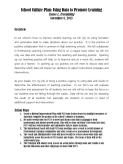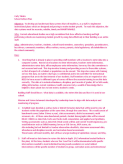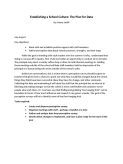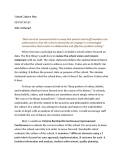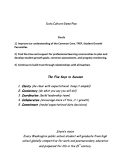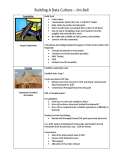1) Apply for Internship
w/ Your District & Grant w/ AWSP
2) Register for Spring Classes 585 & 588
____________________________________________________________________________
Tonight : Sharing Leadership Plans
5 Groups of 4 ~ 10-minutes Each
Give Feedback Verbally
Students will develop a leadership plan that calendars ways in which their leadership will be rooted in data-based decision making aimed at improving culture, teaching, and learning. It should address those issues in a written form followed by a calendar-specific plan that would benefit a practicing principal in the area of assessment. The plan should be designed to serve as a guide for you in your future roles as principal.
____________________________________________________________________________
Final Assignment ~ Assessment Portfolio
Your Assessment Portfolio is the Top Ten Artifacts you don't want to forget from this class.
This is my favorite, although I've reduced the assignment this year to simply the 10 Artifacts:
Don't create this for me!
Make these assignment something you'll appreciate in the future when implementing these topics in your internship or in your own building.
________________________________________________________________________
Standard I: A school administrator is an educational leader who promotes the success of each student by leading the development, articulation, implementation, and stewardship of a vision of learning that is shared and supported by school and community stakeholders.
Criteria 1 Advancing a district-wide shared vision for learning
- Continually reviews and restructures the vision to address changing circumstances and relevant data reflective of the learning community. Guides others in establishing the vision.
Criteria 2 Putting the vision for learning into operation
- Implements a vision in multiple settings. Uses data to continually monitor and revise systems to reflect the vision. Solicits from and gives feedback to other administrators to analyze the effectiveness of the school vision in shaping education programs, systems, and resources to positively impact student learning.
Criteria 3 Developing stewardship of the vision
- Continually evaluates match between vision and the learning community. Expands base of stakeholders and empowers their participation in shaping education programs, systems, and resources to move the learning community toward the shared vision of promoting success of all students. Stakeholders take responsibility for renewing the vision and designing supporting systems, as well as acknowledging and celebrating progress toward the vision.
Criterion 1: Creating a Culture
- Element 1.1 Develops and sustains focus on a shared mission and clear vision for improvement of learning and teaching.
- Element 1.2 Engages in essential learning conversations for ongoing improvement.
- Element 1.3 Facilitates collaborative process leading toward continuous improvement.
- Element 1.4 Creates opportunities for shared leadership.
Criterion 3: Planning with Data
- Element 3.1 Recognizes and seeks out multiple data sources.
- Element 3.2 Analyzes and interprets multiple data sources to inform school-level improvement efforts.
- Element 3.3 Implements data-driven plan for improved teaching and learning.
- Element 3.4 Assists staff to use data to guide, modify and improve classroom teaching and student learning.
- Element 3.5 Provides evidence of student growth that results from the school improvement planning process.
Criterion 4: Aligning Curriculum
- Element 4.1 Assists staff in aligning curricula to state and local district learning goals.
- Element 4.2 Assists staff in aligning best instructional practices to state and district learning goals.
- Element 4.3 Assists staff in aligning assessment practices to best instructional practices.
Criterion 5: Improving Instruction
- Element 5.1 Monitors instruction and assessment practices.
- Element 5.2 Assists staff in developing required student growth plan and identifying valid, reliable sources of evidence of effectiveness.
- Element 5.3 Assists staff in implementing effective instruction and assessment practices.
- Element 5.4 Evaluates staff in effective instruction and assessment practices.
- Element 5.5 Provides evidence of student growth of selected teachers.
Criterion 8: Closing the Gap
- Element 8.1 Identifies barriers to achievement and knows how to close resulting gaps.
- Element 8.2 Demonstrates a commitment to close the achievement gap.
- Element 8.3 Provides evidence of student growth in learning.*
Dinner at BJ's This Tuesday
Observe Dr. Baxter's Class Next Wednesday
Final Thoughts
Stay Organized & Make Good Decisions
Relationships Relationships Relationships
Attitude is Everything













